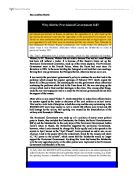Python Program for Fibonacci numbers - GeeksforGeeks.
Python Recursion A Fibonacci sequence is the integer sequence of 0, 1, 1, 2, 3, 5, 8. The first two terms are 0 and 1. All other terms are obtained by adding the preceding two terms.This means to say the nth term is the sum of (n-1) th and (n-2) th term.
In this sample program, you will learn how to generate a Fibonacci sequence using recursion in Python and show it using the print() function. To understand this demo program, you should have the basic Python programming knowledge. Also, you can refer our another post to generate a Fibonacci sequence using while loop.

The Fibonacci numbers are the numbers of rabbit pairs after n months, i.e. after 10 months we will have F 10 rabbits. The Fibonacci numbers are easy to write as a Python function. It's more or less a one to one mapping from the mathematical definition.

Python Program to Print the Fibonacci sequence In this program, you'll learn to print the Fibonacci sequence using while loop. To understand this example, you should have the knowledge of the following Python programming topics.

In Python, we can solve the Fibonacci sequence in both recursive as well as iterative way, but the iterative way is the best and easiest way to do it. The source code of the Python Program to find the Fibonacci series without using recursion is given below.

Explanation: In the above Python program, we use recursion to generate the Fibonacci sequence. The function FibRecursion is called recursively until we get the output. In the function, we first check if the number n is zero or one. If yes, we return the value of n.

You might be reluctant to write two functions since you probably never actually need a pair of Fibonacci numbers.. Browse other questions tagged python performance python-3.x fibonacci-sequence or ask your own question. The Overflow Blog A practical guide to writing technical specs. Podcast 224: Cryptocurrency-Based Life Forms.

Learn with Alison the basic components of computer programming using the Python language. Learn with Alison the basic components of computer programming using the Python language. Hello, Log in. Exercise - Write a Fibonacci Function. Study Reminders. Set your study reminders. We'll email you at these times to remind you to study. You can.

Python Program to Display Fibonacci Sequence Using Recursion. Fibonacci sequence: A Fibonacci sequence is a sequence of integers which first two terms are 0 and 1 and all other terms of the sequence are obtained by adding their preceding two numbers.

Fibonacci Series in Python. Let’s see the implementation of Fibonacci number and Series considering 1 st two elements of Fibonacci are 0 and 1:. However, you can tweak the function of Fibonacci as per your requirement but see the basics first and gradually move on to others.

More Lessons for Python Programming Math Worksheets A series of video lessons on the Python Programming Language given by Khan Academy. Exercise - Write a Fibonacci Function Introduction to the Fibonacci Sequence and a programming challenge.

In this tutorial we are going to learn about Python Recursion and use it for fibonacci sequence generation. In previous tutorial we discussed about Python Function and Arguments. Functions that are implemented using recursion can be implemented using loops. But you have to know the basics of Python Recursion.

In this example we will use Python 3.6 and you must have knowledge on Python language to implement. Example with Source Code. We will write function to print fibonacci series using Python programming. The below function prints fibonacci series upto n, where n is an integer value passed as an argument to the function.



